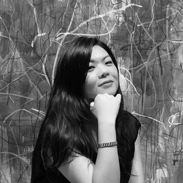Studio Visit
Japanese Artist Yoko Terauchi Believes in a World Without Boundaries
The Japanese artist invited us into her Tokyo studio inside a converted residential apartment.
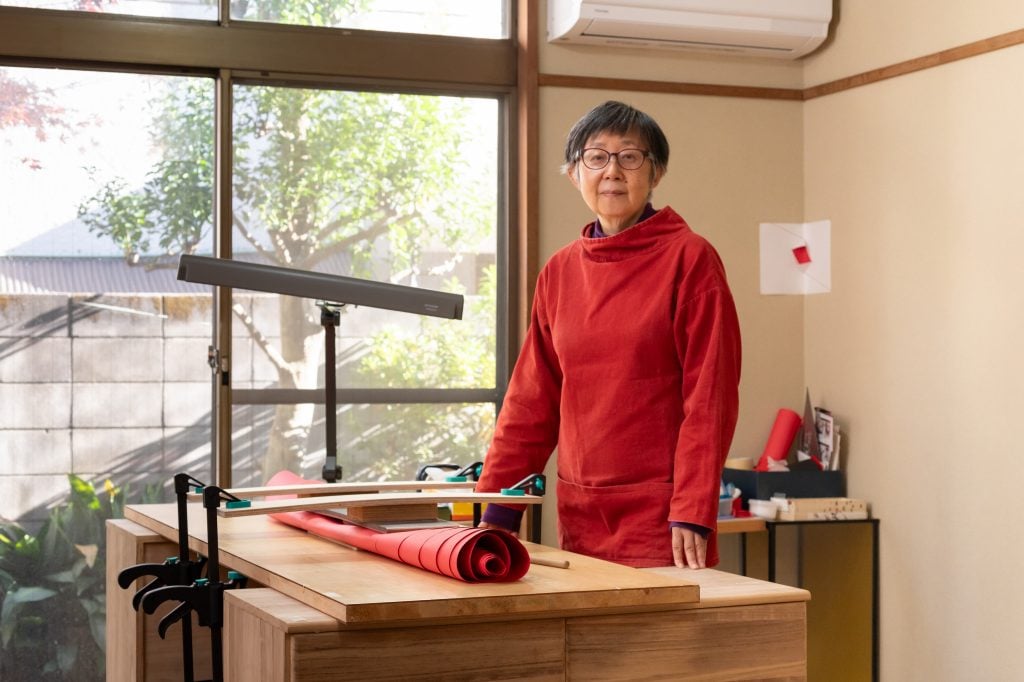
Yoko Terauchi was born in Tokyo in 1954, but London is the birthplace of her artistic career. The artist completed her studies at Women’s Art University in Japan before moving to London in 1979 to further her education. In London, she enrolled in a postgraduate sculpture program at St. Martin’s School of Art (today Central Saint Martins College of Art and Design) and spent the next decade in the U.K. capital developing her art.
During these years, Terauchi began working with the famed English sculptor Anthony Caro, who was a tutor at St. Martin’s at the time. She also had exhibition opportunities at top public and commercial galleries in London such as Hayward Gallery, Chisenhale Gallery, Victoria Miro, and Fruitmarket Gallery in Edinburgh. In 1984, she created the work Hot Line 19 using English telephone cables at Leeds Art Gallery, where she made the work live in front of an audience for a week, taking questions from her audience about her work process. Her works were also exhibited in Germany, including Städtisches Museum Abteiberg in Mönchengladbach and Galerie Hoffmann.
Terauchi returned to Tokyo in 1998 and continued to make art and show her work in her home city, with exhibitions at the Keio University Art Centre in Tokyo, Toyota Municipal Museum of Art in Toyota city, and Aichi University of the Arts Satellite Gallery in Nagoya. She is a professor emeritus at Aichi University of the Arts.
Major themes in Terauchi’s work include concepts of oneness, wholeness, and the contradictions of interior and exterior. She believes that “the world is one without distinction,” and challenges the conventional understanding of the world through opposing concepts by dissolving their boundaries through her conceptual site-specific installations.
Recently, Terauchi took us on a tour of her Tokyo studio and shared insights into her creative process.
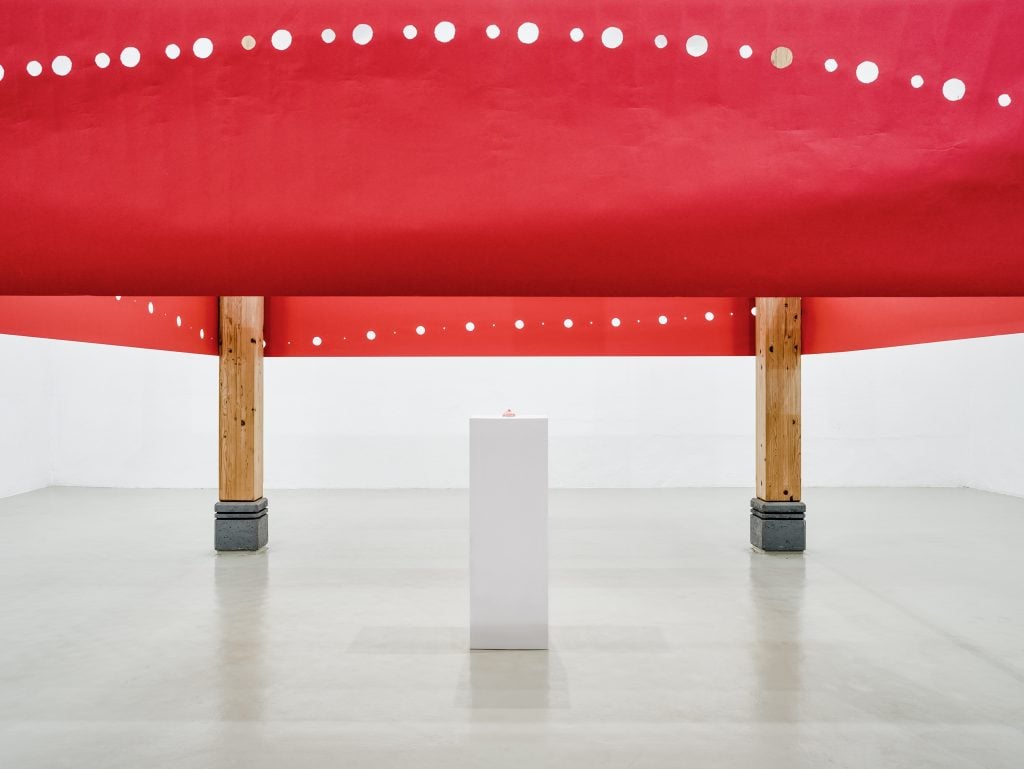
Yoko Terauchi, One is Many Many is One at Galerie Hoffmann in Friedberg, Germany, 2022. Photo by Fabian-Stransky.
Tell us about your studio. Where is it, how did you find it, what kind of space is it, etc.?
My studio is situated in a residential area of Tokyo. It is an ordinary residential flat with three small rooms. Two of the three were originally Japanese-style rooms with tatami mat floors, and I covered them with wooden flooring.
As many of my works are site-specific installations, the venues where they are shown, such as museums and galleries, are de facto my studios. I create each work from scratch on the spot. My Tokyo studio becomes the space for me to plan for new works, making maquettes and simulations of a part of an installation in actual size. I use the smallest room as a storage space.
What made you choose this particular studio over others?
When I decided to move back to Japan for good after living in London for 20 years, I needed to find a studio as well as a storage space before. But I did not have time to look around. My father let me use an apartment he owns as a studio space. It’s only a three-minute walk away from my home in Tokyo. Not only did it save commute time, but it was also almost impossible to find a studio space in central Tokyo. Although this apartment is not an ideal space for a sculptor it works for me, especially when it is rent-free and its location is perfect.
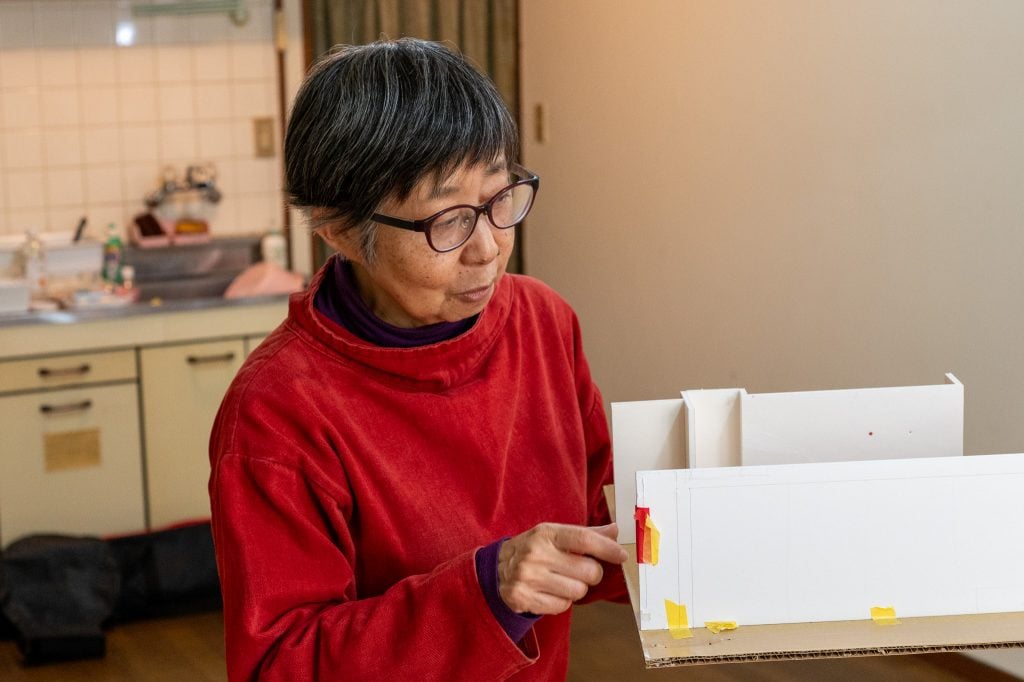
Yoko Terauchi in her Tokyo studio. Photo by Akira Oya.
Do you have studio assistants or other team members working with you? What do they do?
I don’t have any assistants in my Tokyo studio, but I have help whenever I work on-site to create a work or build an installation. What they do varies. Sometimes they are professional installers who are skillful and experienced, and I can discuss my work with them to find a way to realize my plan. Sometimes they are the people who have no experience with art but are willing to help. I ask them to help me with work that I cannot do alone, such as lifting a large sheet of paper together.
How many hours do you typically spend in the studio, what time of day do you feel most productive, and what activities fill the majority of that time?
It is difficult to say, as it all depends on each work I am creating at that time. I use my studio in Tokyo to experiment with new ideas and materials, make models of exhibition spaces, and simulate the sizes of details of installation. Sometimes I work in the studio from the morning to the evening. Sometimes I work in my house where it is more suitable for the particular process. But I do not work in the studio late at night. I prefer to work during the daytime when you can see daylight.
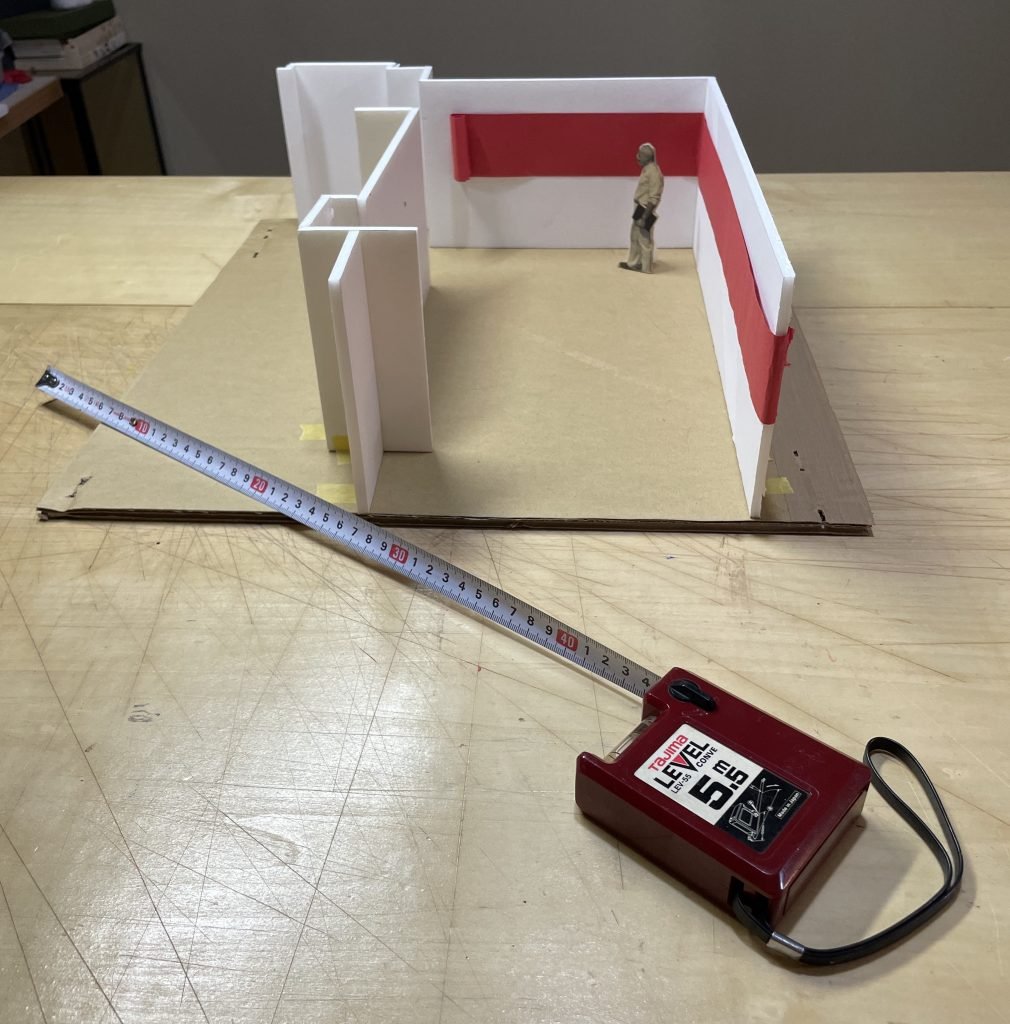
“Photo of my tool, tape measure,” says Yoko Terauchi. Photo courtesy of the artist.
What is a studio task on your agenda this week that you are most looking forward to?
Checking the condition of an old work in the storage, as one art museum is interested in purchasing the work.
What are you working on right now? Please send us a few smartphone shots of a work in progress—or photos of different works in various states of completion—in a way that you think will provide insight into your process.
I am working on a new version of my work titled One is Many Many is One, (recently exhibited at Hagiwara Projects in Tokyo) using different papers as a new trial. I am in the midst of curving a hollow cone shape into the paper roll to make a cast which liquid plaster will be poured into.
At first glance, the finished One is Many Many is One appears as a long piece of paper with many holes but in fact, it is only one hole when you roll it up. This work demonstrates our habitual way of perceiving each individual part of an object as one standalone, independent item. But this creates division and opposition as it pits one against another when they belong to the same object. In the case of this work, each hole is in different sizes. But such differences do not exist when you roll up the paper into a tube, because there is only one hole.
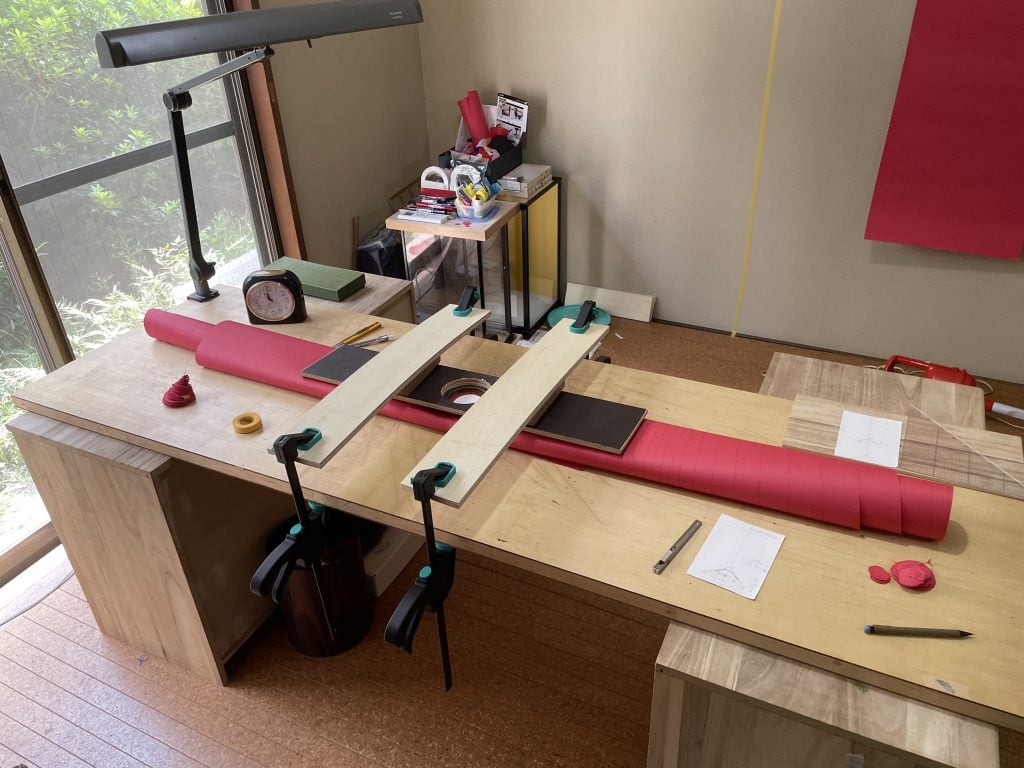
Making of One is Many Many is One. Photo by Yoko Terauchi.
What tool or art supply do you enjoy working with the most, and why? Please send us a snap of it.
My tape measurer. To get an idea for each site-specific installation, the first thing I do in every venue is measure all the sizes of the space such as the floor, walls, ceiling, windows, and pillars. This process is very important for me since this allows me to feel the size and nature of the space through my whole body, not as information.
I then make a model of the site according to this measurement. However, the experience of measuring at the site is the source of getting an idea for the work for the site.
What kind of atmosphere do you prefer when you work?
Silence. Clear space
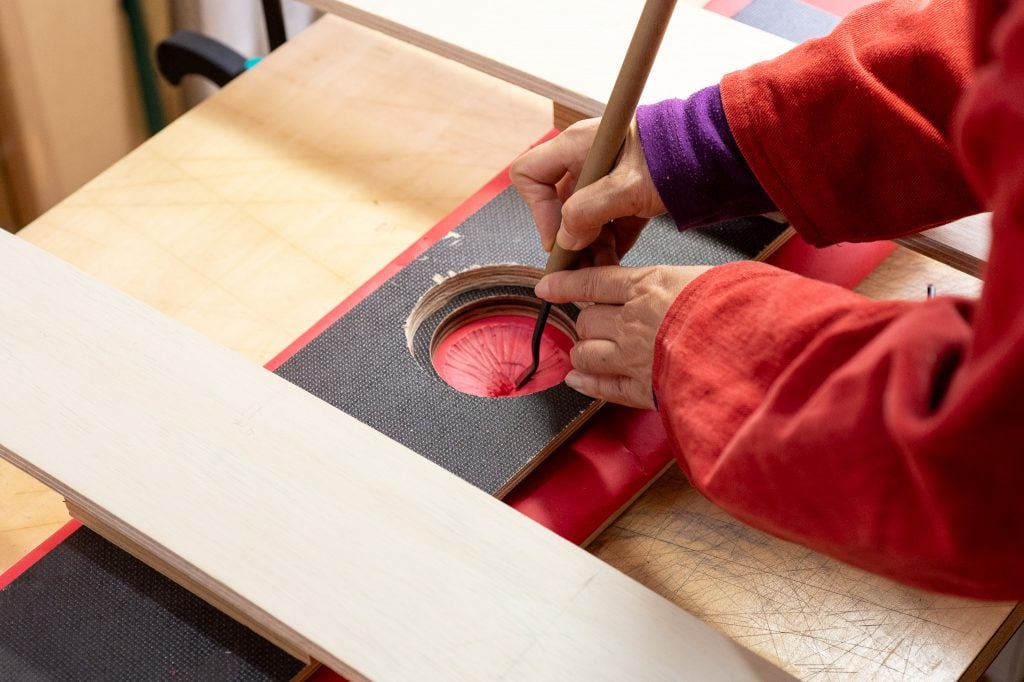
Yoko Terauchi shows us what she is working on at her studio right now. Photo by Akira Oya.
How do you know when an artwork you are working on is clicking? How do you know when an artwork you are working on is a dud?
Whenever I am planning a new site-specific work, I always go to the actual site and spend a lot of time getting used to the space itself. I try not to think about work as a form or images in advance. I also try to forget about my previous work.
I just concentrate on feeling the space with my body. I walk around not only inside the room but also outside it. Getting used to the space itself is a very important process to find out the special nature of the site itself. I use the concrete structure of the room. I often visit the site again and again until I get to know the space. I do not like forcing preconceived ideas or forms on the site. I wait until I get inspiration for the most suitable form that conveys my concept using the very nature of the site. When it comes I can tell it is a good work instinctively.
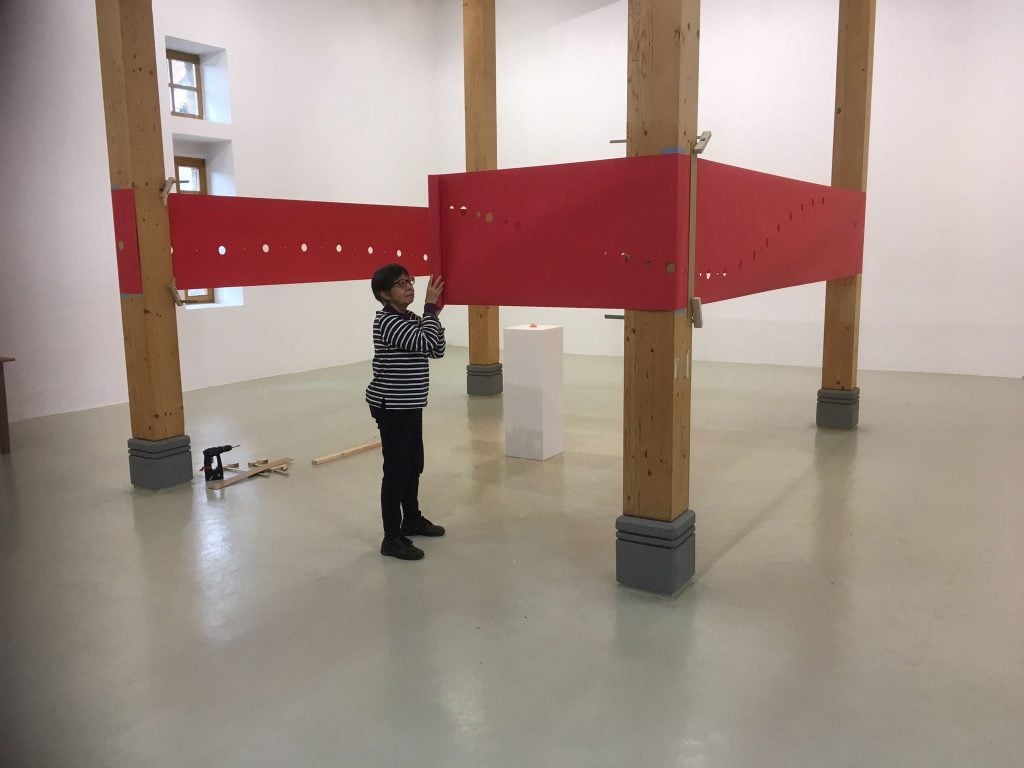
Yoko Terauchi was making her site-specific installation at Galerie Hoffman in 2022. Courtesy of the artist.
Where do you get your food from, or what do you eat when you get hungry in the studio?
I walk back to my home to eat lunch. I hardly eat any snacks while I am working in my studio. I drink water though.
Is there anything in your studio that a visitor might find surprising?
My old sculptures, made from British telecom cable.
What is the fanciest item in your studio? The most humble?
My laser level. It’s the fanciest in terms of price. There is nothing humble about laser levels.
What’s the last thing you do before you leave the studio at the end of the day (besides turning off the lights)?
Place all the tools back in their original positions.
What do you like to do right after that?
I go back home for supper.

